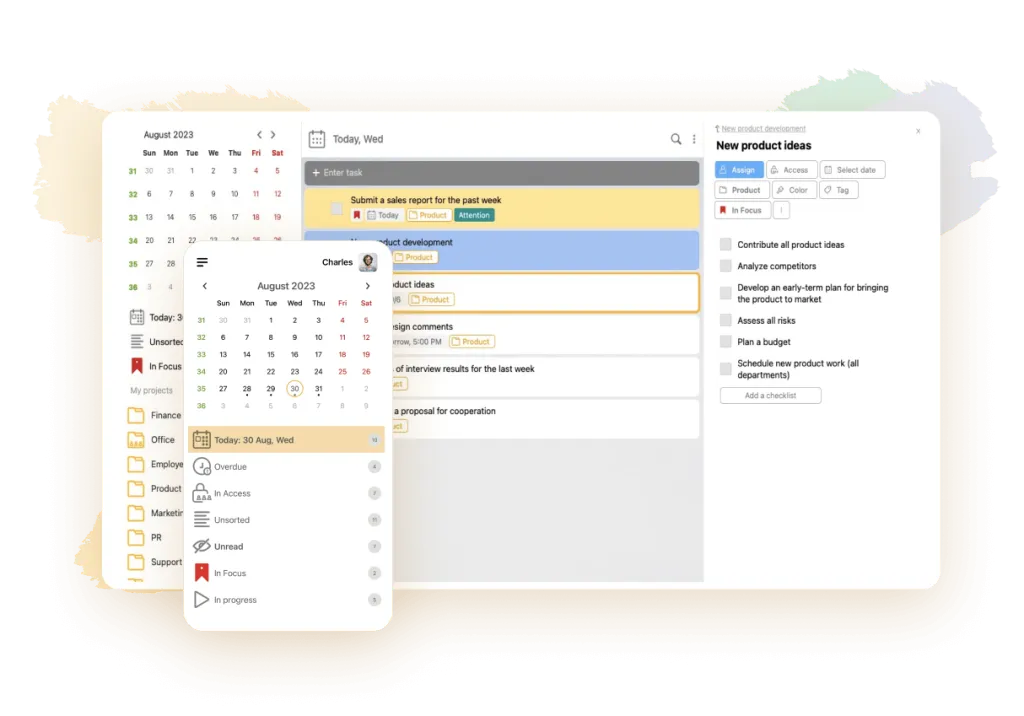
Ted Scott
February 29, 2024
The efficiency of a company at any stage of management depends on the quality, efficiency and diligence of its employees. This is achieved only by those firms in which managers know how to give tasks in such a way that they are executed perfectly.
But not every manager knows how to correctly distribute tasks. In most cases, subordinates either perform tasks on automatic, or misinterpret the questions asked, or are lazy and shoddy in dealing with problems.
So how do you give out assignments competently, so that there are no comments on the end result, and the work is done perfectly? There are several principles that should be known to every manager who is striving for business growth. We will talk about how to set tasks correctly in this article.
What is a mission statement
The key competence of a manager is to correctly define the functions, company goals and tasks for the business for a specific period of time, and then - to indicate the best ways of their fulfillment by subordinates with a clear algorithm of actions.
The exact formulation of the problem situation, description of sequential activities and the image of the result that should be obtained and presented by employees as a result of labor activity - this is the process of setting tasks in business.
If a manager lacks this skill, staff may misinterpret tasks, causing them to misconstrue requirements and undermine workflow.
Why do you need to set goals?
An impeccable problem-setting is half of a successfully completed task, which includes a good half of problem solving. It organizes the team, multiplies the work effect of each individual participant in the work activity.
Whereas chaotic efforts without a clear formulation are always unpredictable. The result is either short-term, poor quality, or negligible impact. Moreover, the disparate actions of a group of people without a common plan under the supervision of management can cause irreparable damage to business activities.
Types of tasks
When developing and setting current tasks, the manager should take into account their status, urgency and importance. In the workflow, it is customary to distinguish four types of input tasks. Let us examine them in more detail.
Important long-term
These are global tasks of paramount importance for business development. For example, to become one of the top ten online stores in the segment, to raise revenue to ten million a month, to open ten branches across the country, to develop new IT technology.
These tasks are planned carefully, developed not one day, not handed out at planning meetings and meetings. Setting such goals requires a special atmosphere, a certain composition of participants (programming specialists, developers, top managers, marketing director, etc.).
Important current
They require immediate solutions for the subsequent successful development and organization of the business. For example, changing suppliers, breaking a contract with one courier service and entering into an agreement with another, choosing a new partner. Need prior preparation and planning.
Everyday
These are basic tasks that must be performed by employees on a daily basis for the company to be fully operational. These issues are usually handled on the fly, without any preparation or planning. For example, calls and mailings to customers, ordering goods.
Other
Provide for tasks that do not need urgent fulfillment. The company’s success and achievements do not depend on their realization. For example, buying a new coffee machine for the office, holding a corporate party, moving the administrative building to a new building.

Tasking rules
Effective goal setting has nothing to do with a rudimentary checklist or to-do list. It consists of several components, which often include:
-
competent distribution of roles in the work team, taking into account the skills and abilities of all subordinates, prompt execution of tasks;
-
Appointing those responsible for the success of the campaign;
-
Concretization of the team’s actions with the indication of strategy, goals for the near future, a set of certain activities;
-
detailing the end result for staff motivation;
-
time limitation of execution with the assignment of approximate deadlines for the full completion of the assignment;
-
use of tracking tools and means to monitor the progress of work and all the nuances of the labor process (software of various capacities, for example, CRM-systems, schedulers, etc.).
When assigning tasks to subordinates, it is also important to follow several important communication rules. These include the following:
-
Specificity. Specifying intermediate and final results, using quality standards, criteria and characteristics of the finished work.
-
Contextualization. Communicating to subordinates the importance of this task for the business as a whole.
-
Respect for the staff, politeness. Conveying a positive attitude towards employees, belief in their capabilities through tone, words, gestures, facial expressions.
-
Trust. Lack of rigid control.
-
Openness. The ability to answer a subordinate’s question at any time about the task he is performing.
-
Constructive feedback. Criticism should only be relevant, clear and well-founded, and contain working advice.
-
Appreciation for the completed work with step-by-step analysis of the activity.
If these rules are followed, tasking employees will be effective and execution will maximize output.
Mistakes made by executives
A number of blunders and omissions made by the manager when setting tasks can lead to missed deadlines, inaccurate execution of assignments or ignoring of the task by the staff. Let’s highlight five main points that managers often do not pay attention to. And very in vain, because they greatly affect productivity and labor efficiency.
Assurance that the subordinate has guessed what the supervisor meant
A clear and detailed instruction is a prerequisite for the perfect execution of an assignment. Explaining the fine details of complex tasks takes only a few minutes, but it prevents possible conflicts, mistakes and miscalculations of personnel in the future.
Vague deadline
The time frame for creating a new product or service, fulfilling a technical assignment, etc. should be clearly defined. The words “quickly”, “soon”, “urgently” are interpreted in different ways. As a result, employees may be convinced that they have several days to complete a task, whereas you originally meant a couple of hours.
Lack of examples
Examples bring clarity to the matter, help to form a clearer idea of what you want to get out of it. They are most necessary if employees have not yet performed these tasks or have not experienced assignments of this specification in practice.
Lack of alternatives
Sometimes a task may be impossible due to various circumstances and reasons. Then it is a good idea to immediately outline alternative options for accomplishing the task. This will allow the employee to do his work calmly, without bothering the manager about trifles. At the same time, there is a significant saving of time.
Disinterest in how well the employee understood the task
An important condition for setting tasks is to realize that the staff understands the task and has an idea of the final result. Therefore, a competent manager is obliged to find out if the team still has questions for him. But there is also an important nuance here: many team members are embarrassed to ask questions or clarify points and topics they do not understand.
In order to avoid this situation, it is recommended that the manager, after setting the task, ask his subordinates open-ended questions such as: “Where will you find information to complete the task?”, “What additional tools will you need to complete the task?”, “What methods and techniques will you use?”, “Will you need the help of programmers or other specialists before the project is completed?”, “What will you need to learn during the work?”.
In this case, the manager has the opportunity to personally ensure that each team member understands the direction they need to work in and the steps they need to take to successfully complete the case.
There are also a number of taboos that should never be tolerated. For example, you must not formulate assignments in an aggressive or dictatorial tone, ask several people to perform the same task, refuse to admit mistakes, ignore a job well done and leave it without moral or financial reward.
Use of CRM systems
Modern CRM platforms are a convenient and easy way to keep all assigned tasks and information about them in one place. With the help of these programs, it is possible to formulate and distribute assignments in real time and monitor the progress of execution.
Popular services collect scientific and mathematical analytics, help identify successful managers and identify unproductive employees who delay deadlines and fail to complete tasks.
LeaderTask - an application for effective task setting

LeaderTask allows you to unite in one place all company documentation, including processes, tasks and projects. The program easily performs delegation processes, controls any assigned tasks that are performed by the team. The service monitors the implementation of assignments of any scale.
In addition, on the platform you can communicate with your subordinates on each specific task in a group or individual conversation, set certain deadlines for the fulfillment of this or that task. It is also possible to attach documents, use a variety of additional programs that facilitate reporting and control. LeaderTask works both online and offline.
Conclusion
So, how to achieve success in setting tasks for subordinates and maximize business efficiency in their execution by employees? It’s simple. Carefully formulate the details of each task, set deadlines, communicate respectfully with staff and assign responsibility. Don’t forget that tasks should be clear, transparent and easy to understand.
Don’t forget to control the process, but without rigid monitoring, so as not to create tension in the team. Organize your work with the help of special tools, CRM-system and trackers. In this case, tasks will be completed on time, work within the company will be characterized by cohesion and organization, and customer loyalty will only grow.








